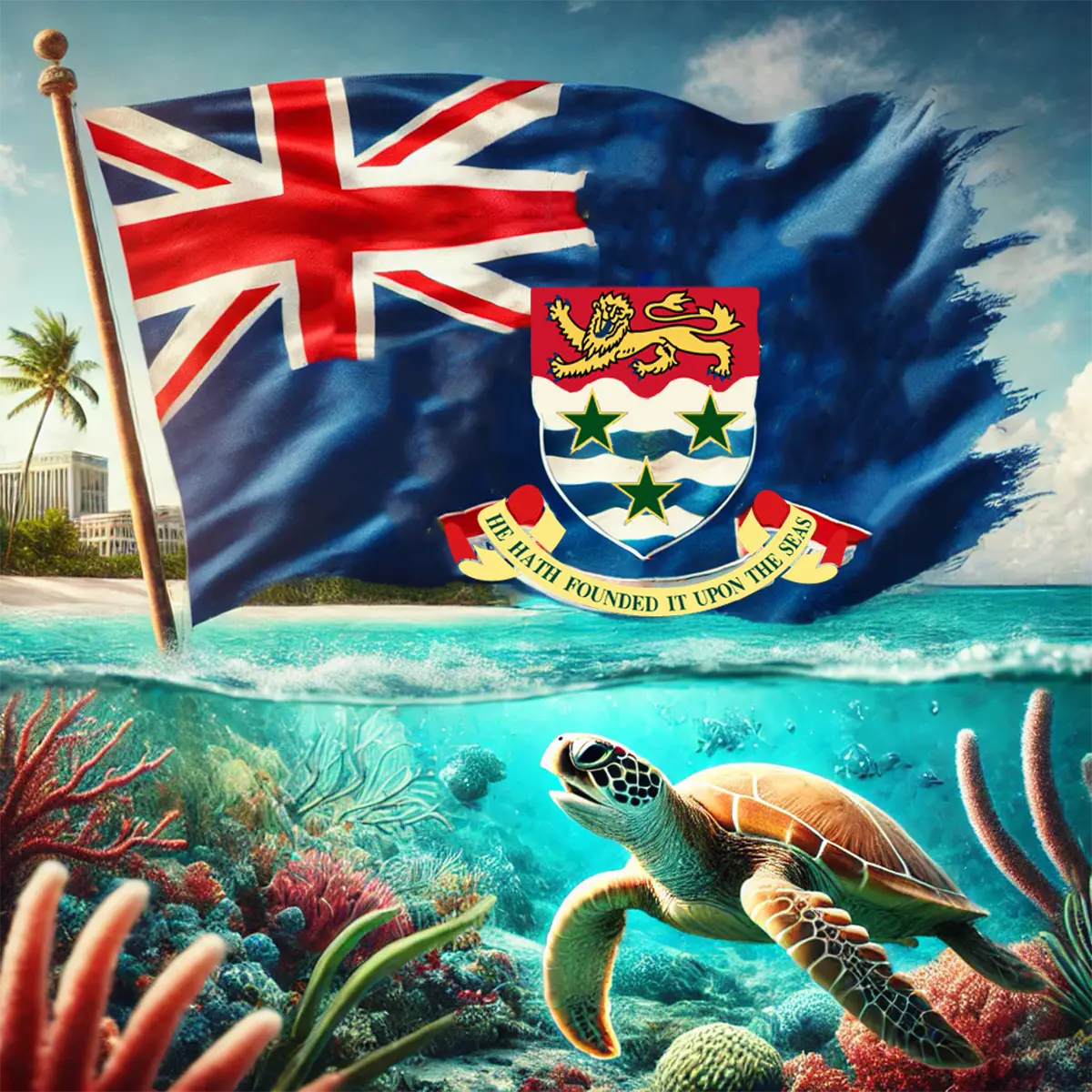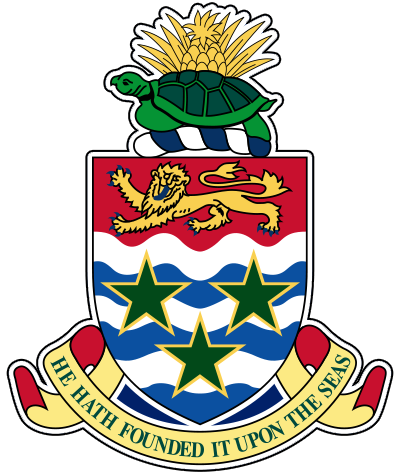The flag of the Cayman Islands consists of the Union Jack, the flag of the United Kingdom, and the coat of arms of the islands on a blue background. The first version of the flag was adopted on May 14, 1958, and differed from the current one only in the design of the coat of arms: from 1958 to 1999, the coat of arms was in a white circle and was almost half the size.








